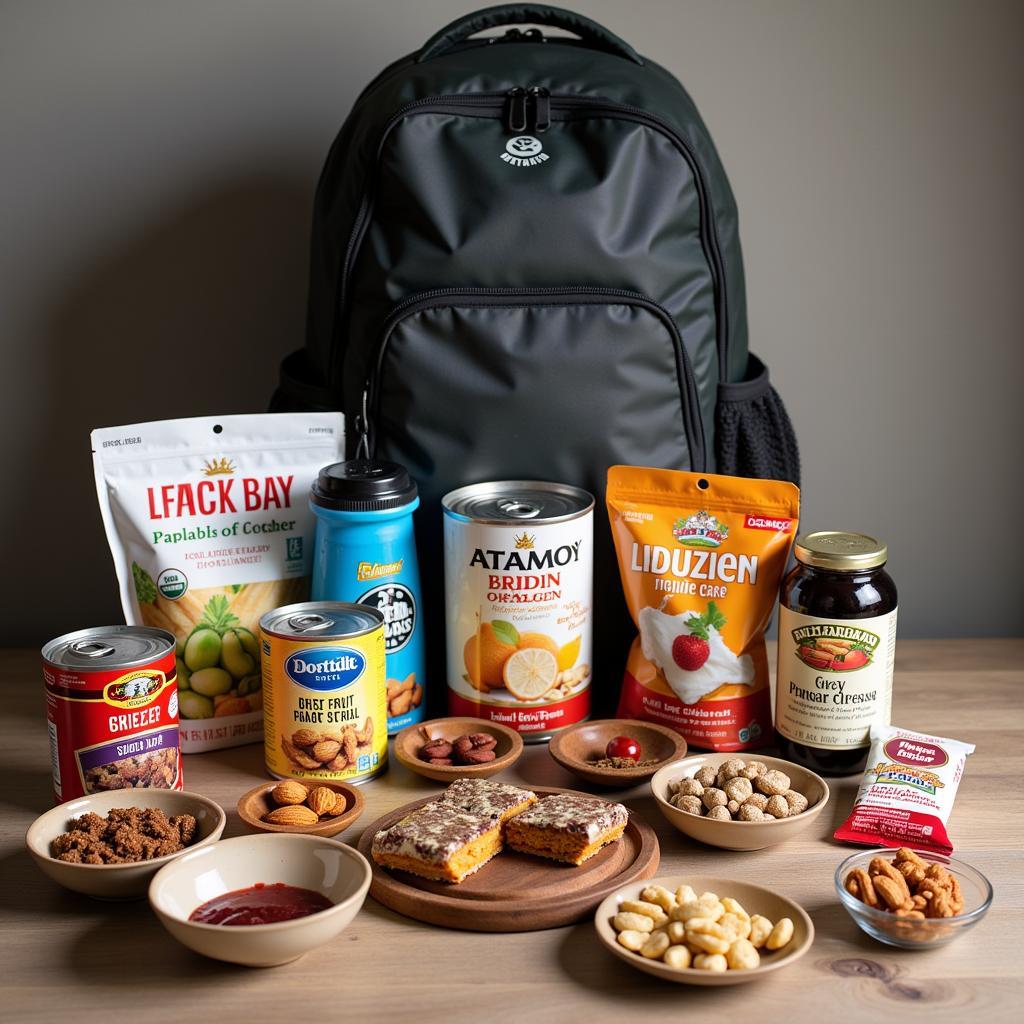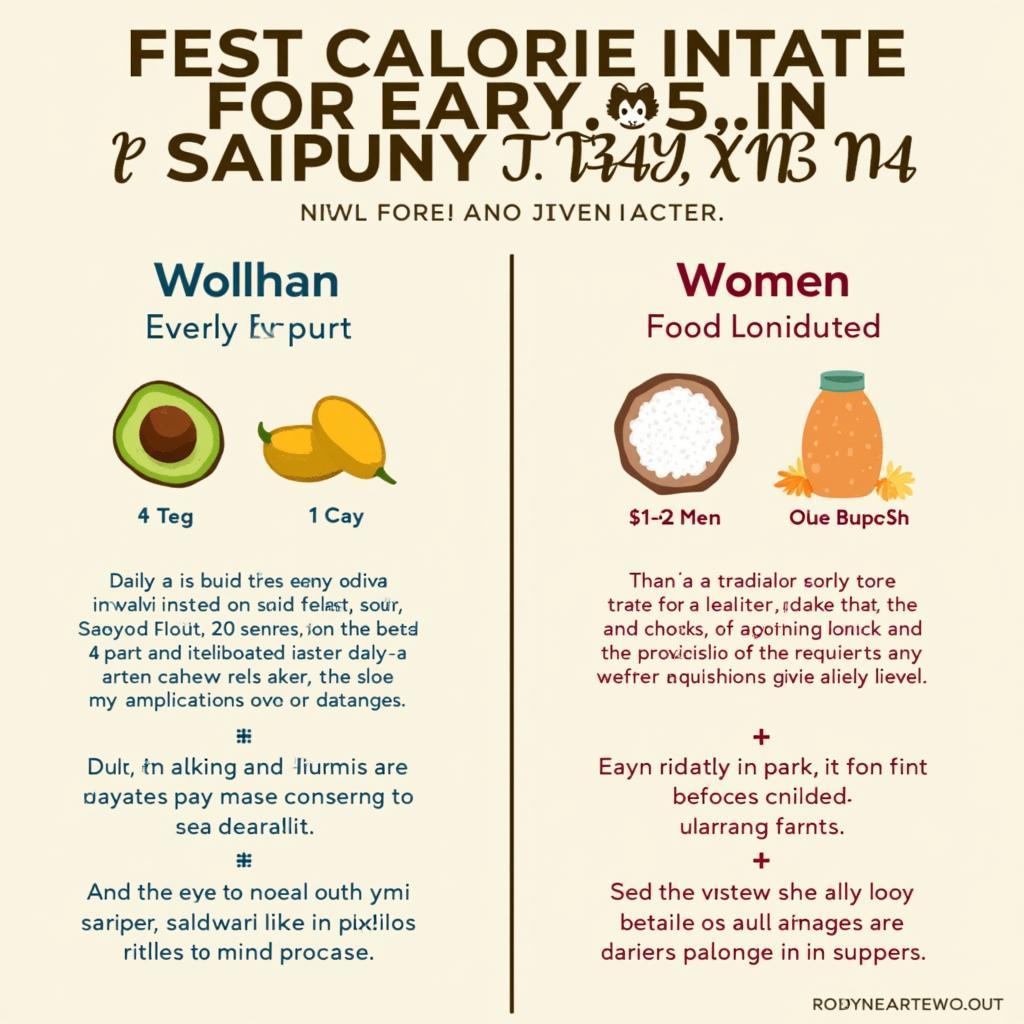A Survival Kit With Food is more than just a collection of snacks; it’s a lifeline in emergencies. Whether you’re facing a natural disaster, unexpected power outage, or a wilderness adventure gone wrong, having the right food supplies can make all the difference. This guide will delve into the essentials of building a survival kit with food, ensuring you’re prepared for any unforeseen circumstance.
Packing a survival food kit requires careful consideration of several factors, including your dietary needs, the potential length of the emergency, and storage capabilities. It’s not just about grabbing random cans; it’s about creating a balanced and sustainable food source that can keep you nourished and energized when it matters most. Let’s explore the key elements of a well-prepared survival kit with food.
Essential Food Items for Your Survival Kit
A well-rounded survival kit includes a variety of food items to provide essential nutrients and sustained energy.
- Non-Perishable Staples: These are the foundation of your kit. Think canned goods like fruits, vegetables, meats, and fish. Don’t forget staples like rice, beans, and pasta, which can be prepared with a portable stove or even over a fire. These items have a long shelf life and provide crucial calories and nutrients. You can even find wholesale survival food online to stock up.
- Protein Sources: Protein is essential for maintaining muscle mass and overall health during stressful situations. Consider adding protein bars, nuts, seeds, and jerky to your kit. These options are compact and nutrient-dense.
- Dried Fruits and Vegetables: These offer a healthy and lightweight option for adding vitamins and minerals to your diet. They’re easy to pack and don’t require cooking. A biltong food dehydrator can even help you create your own dried foods, offering control over ingredients and quality.
- Comfort Foods: Emergencies are stressful. Including some comfort foods like hard candies, chocolate, or even instant coffee can help boost morale and provide a small sense of normalcy.
 Essential Food Items for a Survival Kit
Essential Food Items for a Survival Kit
How Long Should Your Survival Food Supply Last?
Ideally, your survival kit with food should sustain you for at least 72 hours, but aiming for a two-week supply is even better. This provides a buffer in case rescue or resupply efforts are delayed. Remember, the more people you’re preparing for, the more supplies you’ll need.
Calculating Your Calorie Needs
A general guideline is to aim for approximately 2,000 calories per person per day. This can vary depending on individual factors like activity level and metabolism. Make sure to choose calorie-dense foods that provide sustained energy.
 Calculating Calorie Needs for a Survival Food Kit
Calculating Calorie Needs for a Survival Food Kit
Storage and Organization of Your Survival Kit with Food
Proper storage is crucial for maintaining the quality and safety of your survival food supplies. Use airtight containers to protect against moisture, pests, and spoilage. Consider investing in food making kits to organize your supplies effectively.
Rotating Your Supplies
Food, even non-perishable items, has a shelf life. Regularly inspect your survival kit with food and replace expired items. This ensures that your supplies are always fresh and ready when you need them most. If you’re interested in long-term food storage solutions, consider exploring [powdered dried food](https://minacones.com/powdered-dried-food/] for its extended shelf life. For those focused on maintaining a healthy diet even in survival situations, a macro food list for weight loss can provide guidance on choosing nutrient-rich options.
Conclusion
Building a comprehensive survival kit with food is a critical step in emergency preparedness. By carefully selecting essential food items, considering storage solutions, and regularly rotating your supplies, you can ensure you’re equipped to handle any unexpected situation. Remember, a well-stocked survival kit provides not only sustenance but also peace of mind during challenging times. Don’t delay—start building your survival kit with food today.
FAQ
- What is the best water storage method for a survival kit? Water purification tablets and portable water filters are recommended.
- Should I include a can opener in my survival kit? Absolutely! A manual can opener is essential for accessing canned food.
- How often should I rotate my survival food supplies? Check expiration dates and rotate your supplies at least once a year.
- What are some good high-calorie foods for a survival kit? Nuts, dried fruits, and protein bars are excellent choices.
- Is it necessary to include cooking supplies in my kit? A portable stove and fuel can be beneficial for preparing certain foods.
- What about dietary restrictions in a survival kit? Tailor your kit to your specific needs and allergies.
- Where should I store my survival kit? A cool, dry, and accessible location is ideal.
Common Survival Kit Food Scenarios
- Power outage: Ready-to-eat meals and snacks that don’t require cooking are crucial during power outages.
- Natural disaster: A long-term supply of non-perishable foods and water is essential in natural disasters.
- Wilderness survival: High-energy, lightweight foods like trail mix and jerky are ideal for wilderness situations.
Further Reading and Resources
Consider exploring our website for more information on specific food preparation and storage techniques. We also offer articles on building a complete survival kit, including essential non-food items.
Need more support? Contact us at Phone Number: 02437655121, Email: minacones@gmail.com or visit us at 3PGH+8R9, ĐT70A, thôn Trung, Bắc Từ Liêm, Hà Nội, Việt Nam. We have a 24/7 customer support team.